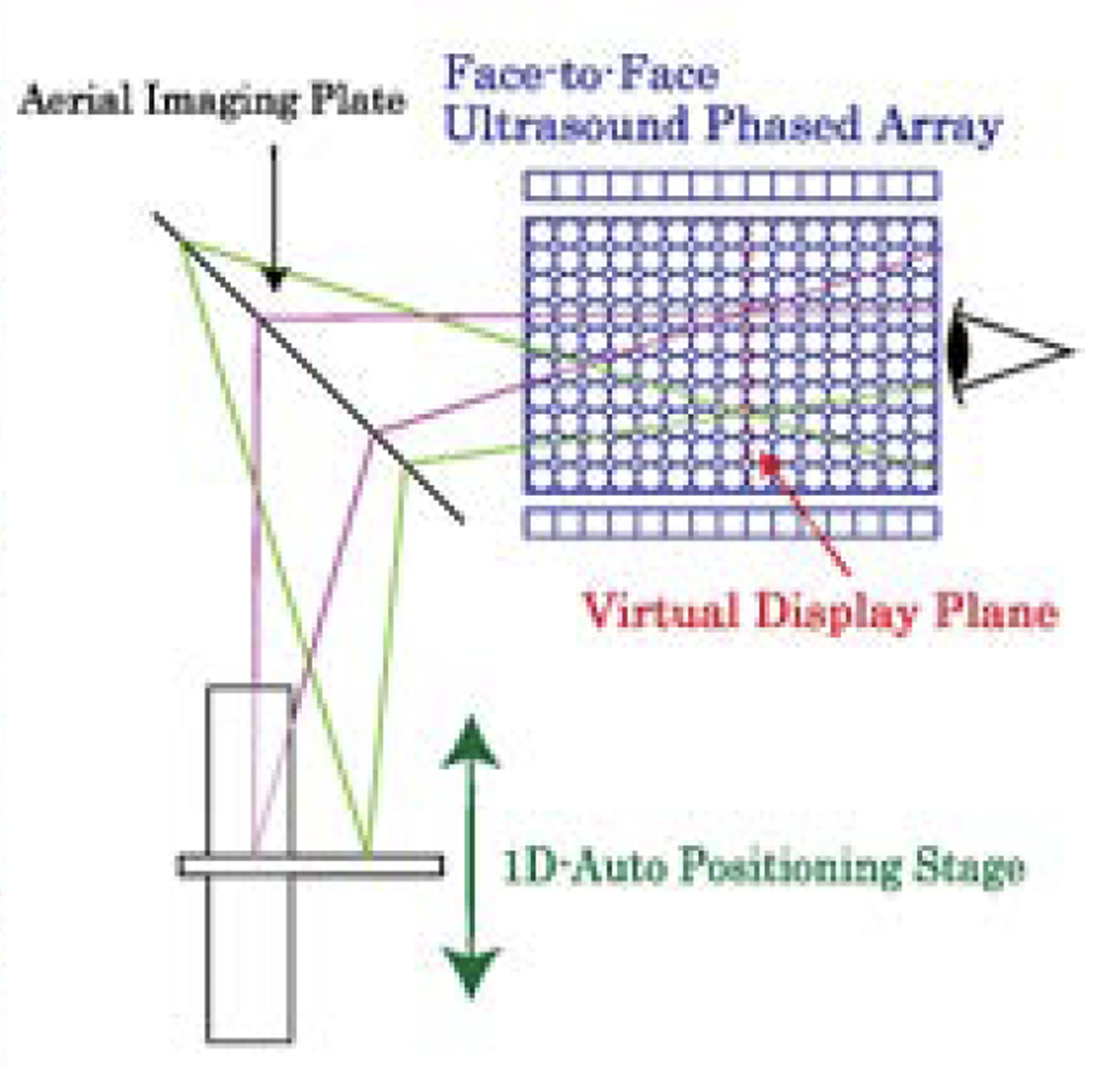“HORN: The Hapt-Optic Reconstruction” by Inoue, Kobayashi-Kirschvink, Monnai, Hasegawa, Makino, et al. …
Notice: Pod Template PHP code has been deprecated, please use WP Templates instead of embedding PHP. has been deprecated since Pods version 2.3 with no alternative available. in /data/siggraph/websites/history/wp-content/plugins/pods/includes/general.php on line 518
Conference:
- SIGGRAPH 2014
-
More from SIGGRAPH 2014:
Notice: Array to string conversion in /data/siggraph/websites/history/wp-content/plugins/siggraph-archive-plugin/src/next_previous/source.php on line 345

Notice: Array to string conversion in /data/siggraph/websites/history/wp-content/plugins/siggraph-archive-plugin/src/next_previous/source.php on line 345

Type(s):
Entry Number: 10
Title:
- HORN: The Hapt-Optic Reconstruction
Presenter(s):
Description:
In this paper we propose a system that superposes a haptic sensation on a mid-air floating image based on ultrasonic standing waves. Conventional approaches of using airborne traveling ultrasounds could only apply weak pressure to the finger surface from a certain angle and thus a limited haptic sensation. Also, the ultrasounds generated air flow as a side-effect [Hoshi et al. 2009].
Here, the use of focused standing waves generated by the system shown in Figure 1 enables creating spatially varying acoustic pressures in all directions. In addition, this method suppresses the air flow. Such standing waves are employed to realize an elastic haptic feedback and to offer a rich haptic experience. Combined with ultrasonic beam steering and floating images, this system can display a virtual spherical gadget that is “pinchable” and “movable.” Thus, an intuitive human-computer interaction can be offered.
References:
ASUKANET, 2011. Aerial imaging. http://aerialimaging.tv.
HOSHI, T., TAKAHASHI, M., NAKATSUMA, K., AND SHINODA, H. 2009. Touchable holography. In International Conference on Computer Graphics and Interactive Techniques, ACM Emerging Technologies.
INOUE, S., AND SHINODA, H. 2014. A pinchable aerial virtual sphere by acoustic ultrasound stationary wave. In Haptics Symposium, IEEE.
WHYMARK, R. R. 1975. Acoustic field positioning for containerless processing. Ultrasonics 13, 251–261.







